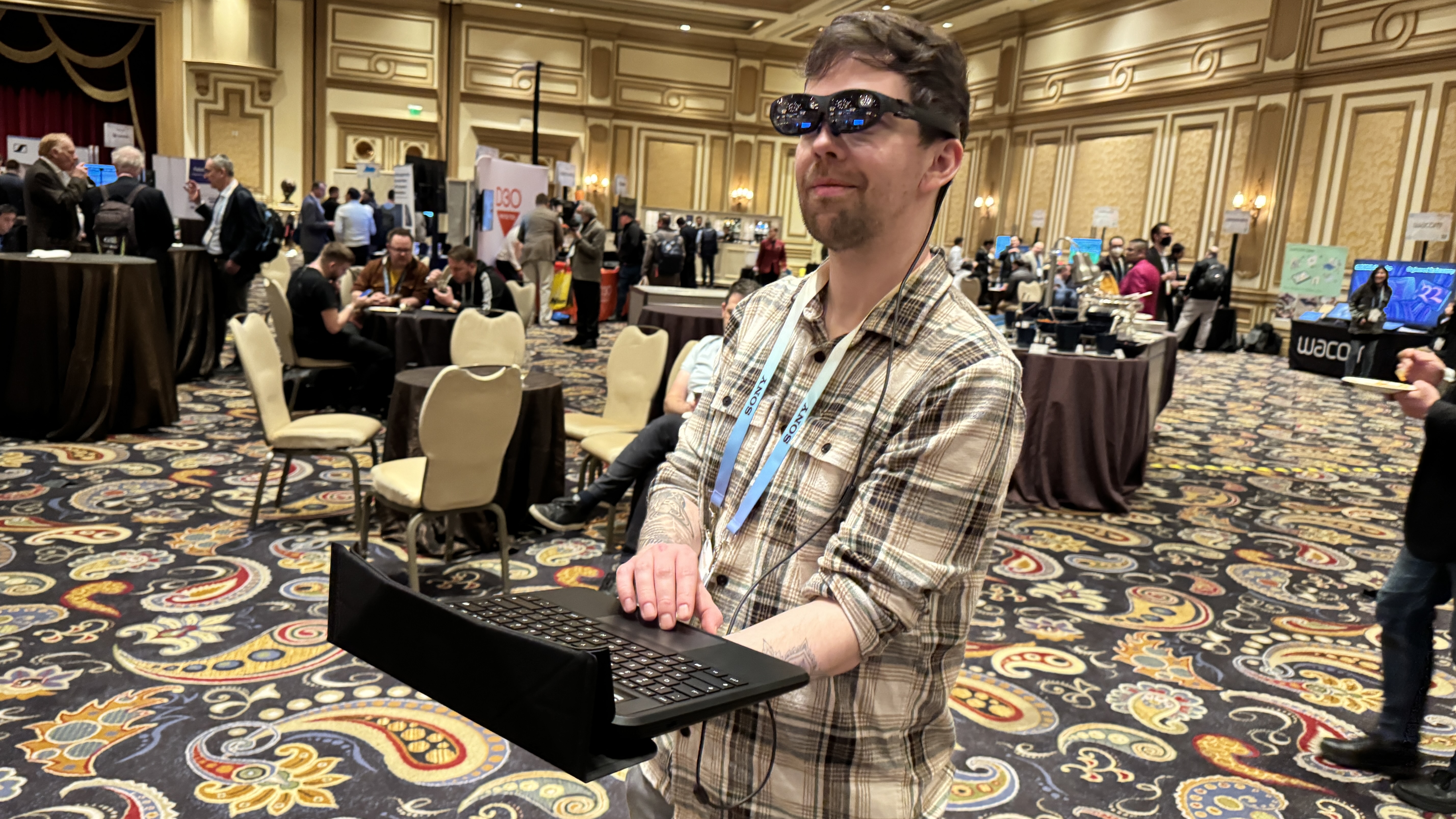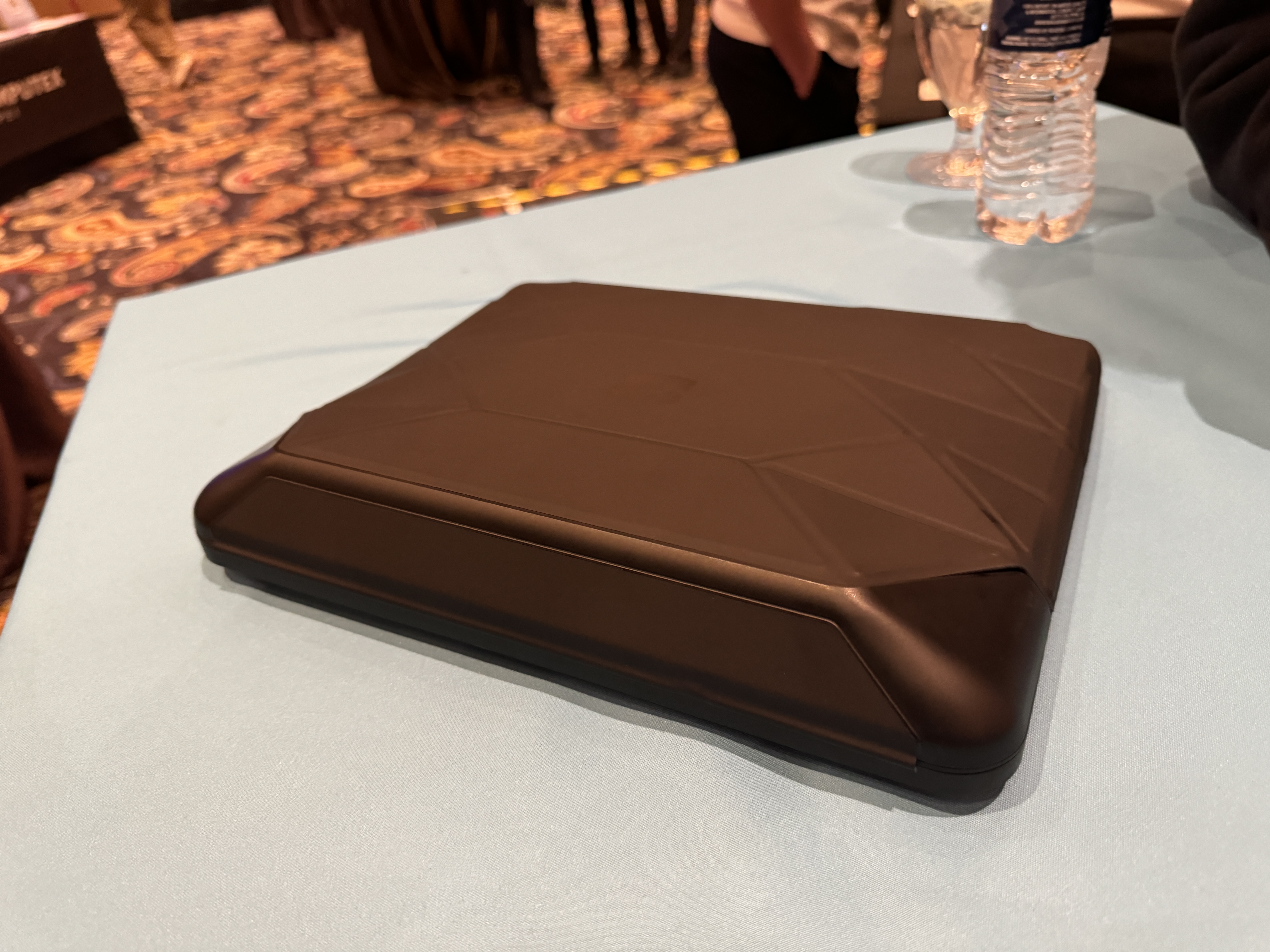Spacetop is the world’s first augmented reality laptop — a weird $2,000+ Chromebook experiment that gets spatial computing kind of wrong
When it comes to the future of spatial computing, a glorified Chromebook without a screen ain’t it, chief!

So I’ve been talking to the point of annoying my coworkers about how AR glasses and VR headsets are merging in capability at CES 2024. But here’s the thing about any innovative development — some people are going to get it right, and others are going to be slightly off the mark.
It’s with this backdrop that I introduce the Spacetop: the world’s first AR laptop that ditches the display and gives you a pair of glasses to enter a spatial computing experience. This is a great concept on paper, but with a software choice that severely limits its capabilities and an eye-watering $2,150 price tag, I’m left scratching my head about where this is placed in the wider arena of AR taking over.
It’s cool, but also not

So let’s talk about the hardware driving this experience. It looks a little bit like a Chromebook with the screen chopped off and that’s by design, with a space to hold the Xreal Light glasses. Stick them on and you’re transported to Spacetop OS — a roughly 270-degree surrounding grid that is a canvas for you to place any and all app windows wherever you wish.
This is powered by a Qualcomm Snapdragon XR2 CPU, and paired with 128GB of storage and 8GB of LPDDR5 RAM. Connectivity bases are handled by Wi-Fi 6 and 5G LTE connectivity.
It sounds mighty good on paper, and it’s a fun experience to use…until you get to the bottom of what you can actually do here. You see, the Spacetop runs on a highly customized version of Android. On one side, this has enabled the whole fun interactive experience. But on the other, it’s Android — a mobile OS with some tablet ideals.
Beyond the very casual productivity of typing documents in Google Drive, listening/binge-watching content and browsing the web, the options for a good user experience are pretty limited. If there were glasses like the Xreal Air 2 Ultra connected, which would enable hand tracking to touch these windows, I’d see a wider use case. But there isn’t, and you’re kind of stuck within this small garden of capability.
The solution is already here (and a lot cheaper too)

To Sightful’s credit, this is an admirable effort. It’s a well-crafted software experience built on Android to give you a pretty slick laptop-esque experience with an augmented space. Plus, with the help of an IR sensor, the position of said screens follow the laptop — meaning easy movement if you’re working on the move.
Get instant access to breaking news, the hottest reviews, great deals and helpful tips.
But in a sea of new AR glasses at CES this year, and the apps to support spatial computing constantly growing (not only in number, but their abilities and compatibility across devices), I’m struggling to see a strong reason for anyone to buy this beyond its cool factor.
This comes down to two key problems. The hardware and its capabilities unlocked by using an OS built on Android means you can’t really do that much beyond the casual productivity. This makes the $2,150 asking price quite the difficult pill to swallow.
It looks cool, and the finely tuned UI is fun. But you could get an M3 MacBook Pro and Xreal Air 2 glasses for less and do far more than a tweaked mobile UI.
Check out our CES 2024 hub for all the latest news from the show as it happens. Follow the Tom’s Guide team in Las Vegas as we cover everything AI, as well as the best new TVs, laptops, fitness gear, wearables and smart home gadgets at the show.
And be sure to check out the Tom's Guide TikTok channel for all the newest videos from CES!
More from Tom's Guide

Jason brings a decade of tech and gaming journalism experience to his role as a Managing Editor of Computing at Tom's Guide. He has previously written for Laptop Mag, Tom's Hardware, Kotaku, Stuff and BBC Science Focus. In his spare time, you'll find Jason looking for good dogs to pet or thinking about eating pizza if he isn't already.
